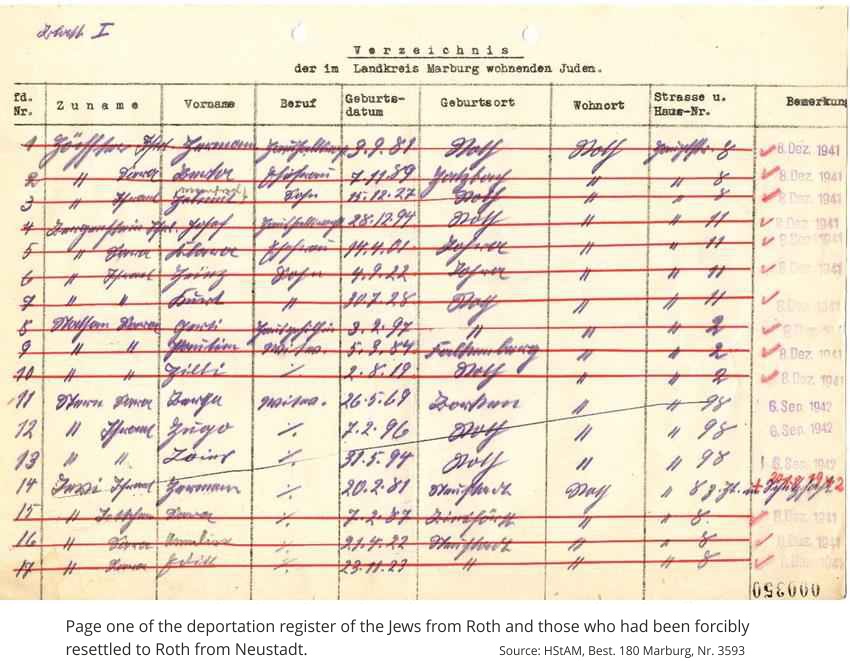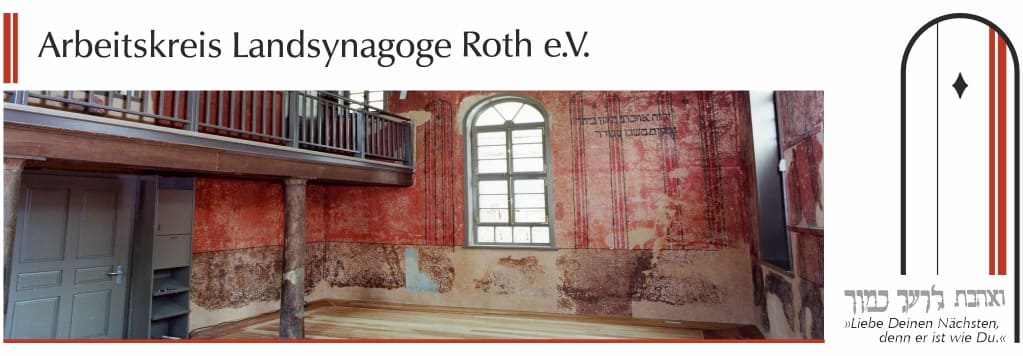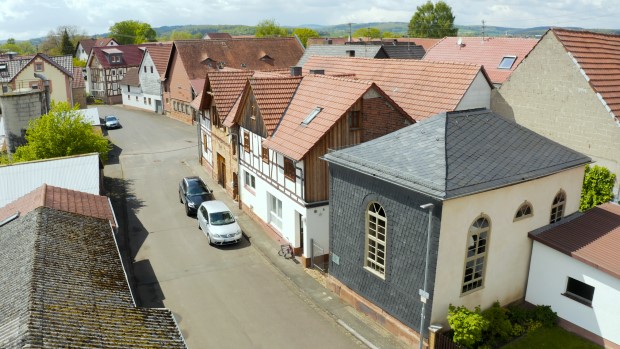by Annegret Wenz-Haubfleisch
Origins of the Jewish families in Roth
Nameless Jewish inhabitants of Schenkisch Eigen, an area including the villages of Roth, Wenkbach, and Argenstein, are first recorded in 1594-95. We do find records of family names in the 17th century, but their settlements were apparently not continuous. The ancestors of the Jews living in Roth in the 20th century can first be identified beginning in the 18th century.

Of the nine Jewish families living in Roth in 1744, only the families of Salomon Susmann and Loeb Juda (also known as Loeb Salomon) received rights to continue living in the village. There is no further record of the Salomon Susmann’s family, and Loeb Juda’s family name died out without a male heir at the end of the 18th century.
A son of the evicted Seligmann family, Aron Seligmann, apparently either stayed in the village or returned to it later. He and his wife Scheile were childless, so they adopted a nephew (the son of Scheile’s sister) from Breidenbach in the Grand Duchy of Darmstadt. During the Westphalian Period, from 1806-1813, this nephew took on the name Stern and became the forefather of the three Stern families still living in Roth in the 20th century.
The founder of the Höchster/Höxter line, which also existed into the 20th century in Roth, was Meyer Isaac. He was Swabian by birth and moved to Roth from the County of Wittgenstein with his wife in 1775. His wife, whose name we do not know, was a sister of Aron Seligmann who had been working there as a servant. Meyer Isaac was granted a residence permit – a document known in German as a Toleranzschein, lit. a certificate of tolerance. They had three children: Sara, Reitz, and Isaac. Isaac took on the name Höchster.
Isaac’s sisters married men who permanently settled in Roth from elsewhere. Reitz married Seligmann Bergenstein from Leihgestern. He had worked in Roth as a servant. Sara wedded Marcus Waescher from Ziegenhain, who moved to Roth in 1815. The latter family-line died out the end of the 19th century.
In the first half of the 19th century two daughters of the Stern family married two sons from the Höchster family, with the result that all Jewish families in Roth were blood-relatives.
The widowed Giedel Höchster, née Stern, married Baruch Nathan from Lohra in 1855, thus establishing the Nathan family in Roth.
The family lines of Stern, Höchster, Bergenstein, and Nathan were the basis of the Jewish community in Roth from the 19th century onward. Markus Roth from Nieder-Ohmen married into the family of Herz Stern II in 1922. This Stern family’s only son Hermann died in the First World War. Markus Roth started a family with the Sterns’ daughter Selma.
Jewish Families in the 20th century
In the 20th century, nine Jewish families and a single person from the Bergenstein family lived in Roth.
The development that took place in the 20th century is almost incomprehensible despite all the academic research on National Socialism. Roth was not one of the particularly “brown” places before 1933. An analysis of the Reichstag election results of the Weimar Republic shows that although the people of Roth had strong German nationalist leanings, many also tended towards the SPD and the KPD. The remaining few were distributed among the liberal parties. In the Reichstag elections from 1928 to 1932, the NSDAP in Roth was well below the district average. It is fitting that as late as 1934, many residents took part in the sudden death of the young mother Selma Roth and paid their last respects.
By 1935, the situation had already changed considerably. It is on record that there were signs on the premises of a businessman and on a farm saying “Jews are not wanted here”. Markus Roth, the fertilizer dealer, was accused of breaking the law in court and denounced in the press, whereupon his business practically came to a standstill. When Emma Stern, Roth's mother-in-law, died in 1937, no Christian resident accompanied her to the cemetery, and the Jews, who were untrained in the trade, even had to make the coffin themselves.
The Jewish children's former playmates joined the Hitler Youth, were indoctrinated with National Socialist propaganda and turned their backs on them. They were isolated as a result, their everyday lives became dull and dreary. At the Roth elementary school, one of the two teachers, Knott, was a convinced National Socialist who bombarded the children with diatribes against Jews and humiliated the Jewish pupils all the more. However, they were only able to attend the school until around 1937 anyway.
Perhaps the Jewish families did not immediately realize that their lives were under threat. In any case, from the mid-1930s they realized that they could no longer maintain their economic existence and that they and their children no longer had a future in Germany. So they tried to leave the country. Not all of them had the financial means or the necessary connections. For the Bergenstein and Nathan families, it was probably hopeless from the outset. Some of the Höchster, Roth and Stern families made it out, but only one of the Stern families was able to flee to safety. Eleven Jewish residents of Roth survived in South Africa, the USA and England.
Life became increasingly difficult for those who stayed behind as the laws and regulations became more and more rigid and the economic hardship more and more pressing. A few courageous villagers secretly sent them food.

In the summer of 1941, Roth became a ghetto village. 20 people from Neustadt were forcibly quartered in Jewish families, ten of them with the Höchster family alone, six with the Sterns and two each with the Nathans and Bergensteins. After the first deportation to Riga in December 1941, to which most of the people fell victim, some of them stayed behind in the homes of Roth families. They were deported to Theresienstadt together with the last Stern family in 1942. There were a total of three deportations in the administrative district of Kassel, although there were no Roth Jews on the middle transport to the district of Lublin (Izbica/Sobibor) at the end of May 1942.
15 Jews from Roth were killed in concentration camps. In just a few years, Roth had developed from a “friendly, quiet” village into a nasty, inhumane and inhumane place for the Jews living in the immediate vicinity due to the actions of convinced National Socialists.
Translated with DeepL.com (free version). The section “Jewish families in the 20th century” is taken from the brochure: Memorial Stones - "Stolpersteine". To those Jewish families who were expelled from Roth to other countries or deported and murdered during the Nazi era, the working group has dedicated stumbling blocks and this commemorative brochure with in-depth biographical information to 2010 and 2013.




